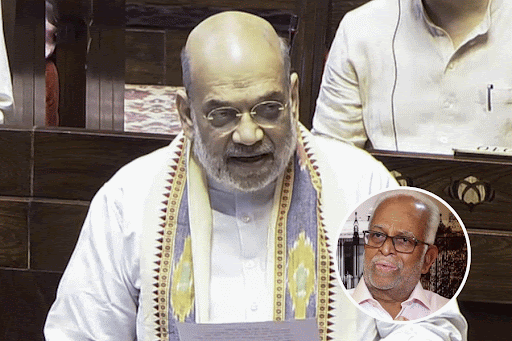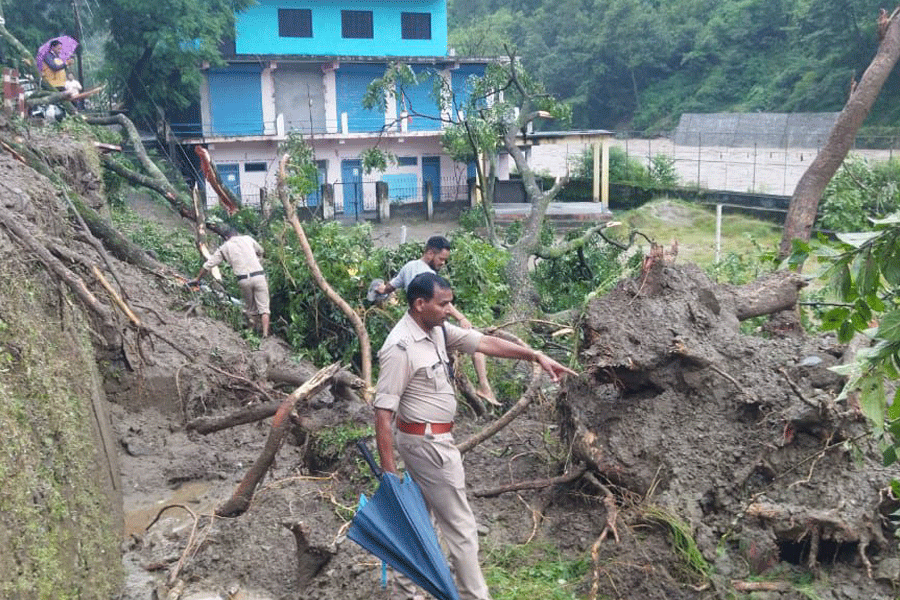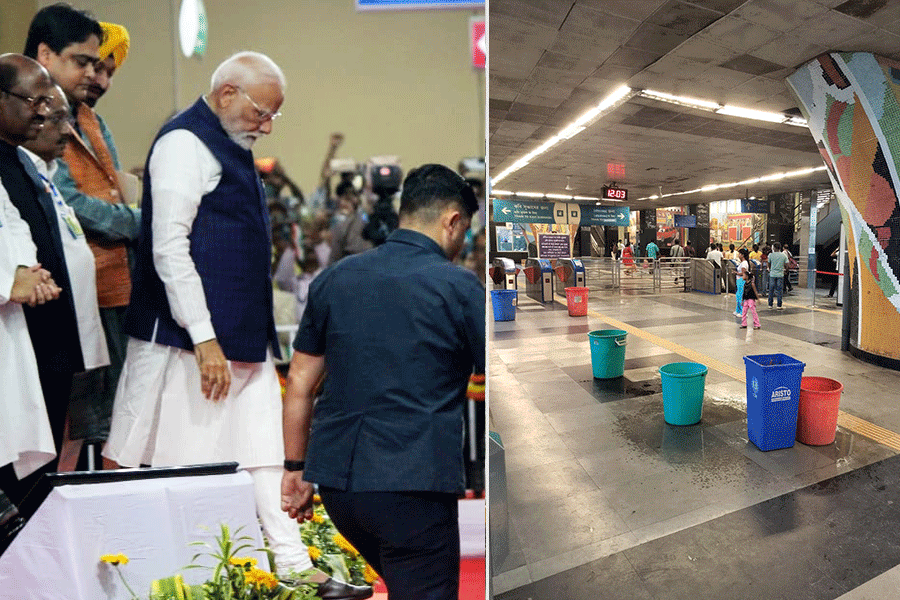-
.jpg)
The five-acre Mary Budden Estate is a colonial-style boutique homestay in the core area of the forest; the pine, oak and rhododendron forests of Binsar in Uttarakhand are home to chital and langur (below) and over 200 species of birds
The thrill of stalking a big cat in a dense, teeming jungle and those heart-stopping moments when you encounter one on a forest safari are addictive experiences. The trouble is, an overdose of human footprint, jostling cameras, and even blaring horns dilute much of the thrill of being in any of India's renowned wildlife sanctuaries like Kanha, Ranthambore or Corbett.
Peripatetic travellers, however, are doing it differently. They are off to explore India's less celebrated (almost unheard of) jungle destinations. They appear too good to be true — rich flora and fauna and no raucous holidaymakers. And sometimes no tigers either!
It's perhaps also time to give the majestic creature a break and wake up to India's huge wildlife repertoire. Says Bittu Sahgal, wildlife expert and editor, Sanctuary Asia, a wildlife and conser-vation magazine: 'My suggestion to people is to savour the entire destination as an experience and not run after the 'Tiger dekha kya?' brigade that literally misses the forest for the tigers.
I believe each sanctuary has its own personality and draw.'
The lesser known reserves might be well-kept secrets today, but they are getting the serious enthusiasts going. So go on, get wild!
-
.jpg)
The harsh terrain and intense cold may rule in Kibber Wildlife Sanctuary in Himachal's Spiti valley, but it's a trekker's paradise
Binsar Wildlife Sanctuary
It's a quiet, yet wild, Himalayan destination marked by dense forests just 33km north of Almora in Uttarakhand. A wildlife getaway with forests of pine, oak and rhododendrons, visitors can explore it on foot, accompanied by naturalists. A birder's paradise, it's teeming with over 200 species of birds. Chital, musk deer, langur and bear are the extra toppings. The park is at its best from February to April and October to November.
Book a spot: One of the few properties in the core area of the forest, Mary Budden Estate spreads over five acres and dates back to the 19th century. Turned into a plush boutique homestay, the estate has two cottages built in colonial style — Mary Budden Cottage has three rooms and Rhododendron Cottage has four rooms. 'Binsar is all about tranquility in the wild,' says Serena Chopra, owner, Mary Budden Estate. The nearest railhead is Kathgodam, 120km away. You can take a taxi to the resort.
Pocket pinch: It costs Rs 17,000 per room, per night on double occupancy. If you book an entire cottage, you'll have to shell out upwards of Rs 45,000.
It includes all meals and taxes. Call 9810185101 or mail to contact@marybuddenestate.in.
-
.jpg)
(Top) Deep in Madhya Pradesh the Satpura National Park teems with wildlife including the tiger and bison; (below) enjoy a luxurious stay amidst the wilderness in one of Forsyth's 12 mud cottages
-
.jpg)
Kibber Wildlife Sanctuary
Now this sanctuary is relatively new, having been set up in 1992. You'll have to head for Kibber village, high up at some 14,200ft in the Spiti Valley of Himachal. Brace yourself for harsh terrain, intense cold and sparse vegetation which make the sanctuary an ideal home for some of the world's most exotic fauna — the Siberian Ibex, blue sheep, red fox, the Tibetan woolly hare, the Himalayan wolf and the elusive snow leopard. Kibber village is also home to a monastery — worth a visit.
Book a spot: Spiti Ecosphere, a responsible tourism outfit, has a 15-day wolf trail on offer between May and August. 'The trek will primarily be along the grazing areas in the park,' says Sunil Chauhan, co-founder, Spiti Ecosphere. A note: trekking level, considering the terrain and weather (the mercury often dips up to -20C), is extreme.
Pocket pinch: Between Rs 25,000 and Rs 30,000 per person, depending on the group size. It includes all transfers to and from Delhi (a three days' journey by road), comfortable accommodation along the trekking route, all meals and guided treks as per itinerary. Call 9899492417 or mail to info@spitiecosphere.com .
-

The remote Namdapha National Park (top) in Arunachal Pradesh is home to unusual species like the clouded leopard; (below) birding by the Dehing river is an added bonus if you are staying at the Namdapha Jungle Eco Camp
-
.jpg)
Satpura National Park
You'll have to get deep into Madhya Pradesh for this one as it's located 210km from the state capital, Bhopal. Sandstone peaks, narrow gorges, ravines and dense forests — that's Satpura National Park for you. Two adjoining sanctuaries — Bori and Panchmarhi — are the add-ons. Set up in 1981, the 524sqkm park gets its name from the surrounding Satpura hill range.
Known for its rich biodiversity, the park is home to tigers, leopards, sambar, bison, the Malabar flying squirrel, mouse deer (chevrotain) and a wide variety of birds. The best time to visit is between October and June. However, warns Hashim Tyabji, director, Forsyth's Satpura Lodge which is located near the park. 'Satpura is not for people who only want to look for tigers. It's a place for genuine wildlife lovers who are interested in all forms of wildlife.'
Book a spot: Spread over a forested 44 acre, Forsyth's has 12 stylish mud cottages with sit-outs. Village and night walks, bush dinners, elephant and canoe safaris in the forest add to the fun. The nearest town is Pachmarhi and the nearest railhead is Piparia, 55km away from where you drive to the sanctuary.
Pocket pinch: Each cottage costs Rs 12,000 per person per night based on double occupancy. The tariff includes all meals, game drives, jungle walks and an elephant safari. Call 044 28263155/56 or mail to info@forsythlodge.com.
Namdapha National Park
It's remote as remote can be, yet is one of the country's — and the world's — richest biodiversity hotspots.
Namdapha National Park in Changlang district of Arunachal Pradesh is a lush and very dense, pristine forest. The largest national park in the Northeastern region, it's a tiger reserve and a birder's delight and home to the hoolock gibbon, binturong, clouded leopard and more.
But, says Phupla Singpho, owner, Namdapha Tours and Treks, 'You'll never see big game if you go looking for it. Spotting a big cat is a matter of chance.' Visits between October and April are rewarding.
Book a spot: Namdapha Tours and Treks, a travel outfit based out of Miao (the nearest town) in Arunachal, customises guided walking safaris for small groups (four to eight). Trekking is the only way to explore this sanctuary.
You camp in the forest, accompanied by a guide, cook and porters. Or book a stay in Namdapha Jungle Eco Camp, an eco-resort 8km away in Miao, where you can enjoy birding by the Dehing River and explore the local villages.
Pocket pinch: Walking safaris cost Rs 2,600 per person per day for a group of four. The cost includes tented accommodation, local transfers to and from Miao, meals and guided treks. You'll have to shell out Rs 2,000 per couple per night for a stay in the Namdapha Jungle Eco Camp.
It includes accommodation and dinner. Call 08974141614 or mail to namdaphatoursandtreks@gmail.com.

.jpg)
.jpg)








